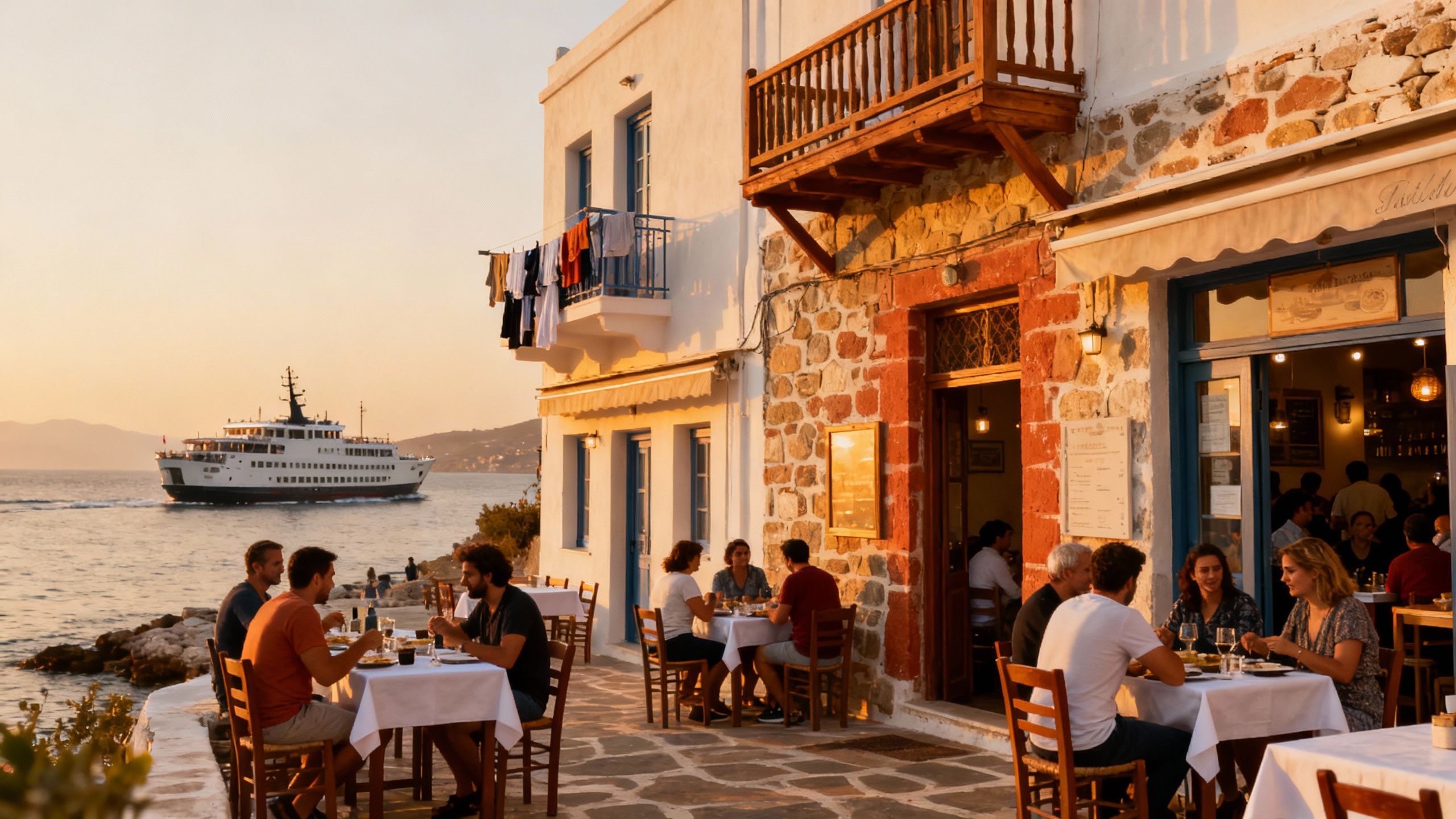Italy: Why Autumn Reveals Neighbourhood Value
Autumn reveals neighbourhoods that keep life — and value — year‑round. Visit off‑season, prioritise markets, due diligence and agents who know local rhythm.
Imagine waking up to a narrow street in Trastevere, espresso steam mixing with laundry lines, then crossing the Tiber to a Saturday market in Testaccio — or picture late‑autumn light along Amalfi’s cliffs, quiet terraces and olive harvests filling local trattorie. Italy’s real attraction is rhythm: mornings at the bar, long lunches, neighbourhood festivals that stitch communities together. That lived‑in tempo changes how property actually performs — the summer postcard often hides the year‑round story buyers need.
Living the Italy life: rhythms that shape choice

Daily life in Italian cities and towns is neighbourhood‑forward. In Rome, mornings are for the bar on Via dei Coronari; in Milan the design crowd coalesces around Brera galleries; in Bologna families meet at Mercato di Mezzo. Those textures — where you buy bread, which cafes close on Tuesday, whether a piazza hosts weekly markets — determine how a property feels every day and how easy it is to let or resell.
Spotlight: Centro Storico vs. residential borgo
A Centro Storico flat — think narrow windows, stone floors, and proximity to monuments — offers constant tourist demand but more seasonal noise and maintenance. A borgo apartment in towns like Pienza or Levanto gives quieter community life, lower running costs, and neighbours who stay year‑round. Your choice should reflect whether you want civic theatre at your doorstep or steady local life that rewards integration.
Food, markets and seasonality as lifestyle indicators
Where chefs and markets thrive, rental demand follows. Look for neighbourhoods with daily markets (e.g., Mercato Centrale in Florence, Mercato di Sant’Ambrogio in Milan) and year‑round restaurant scenes rather than only summer beach kiosks. These local amenities sustain occupancy outside peak months, making a property less vulnerable to seasonal drops.
- Lifestyle highlights to scout in person: Mercato di Testaccio (Rome); Via Toledo cafés (Naples); Brera art walks (Milan); Marina Grande morning fish markets (Sorrento); outdoor cinema nights in Bologna’s neighbourhood squares; olive harvest festivals in Tuscany.
Making the move: practical realities that protect the lifestyle

The romantic image of Italian life meets bureaucracy at the notary’s desk. You’ll need a codice fiscale, a notary (notaio), and clarity on whether a property is classed as a primary home or second home — that distinction alone alters taxes and holding costs. Partnering with locally experienced professionals keeps the lifestyle promise intact by avoiding legal surprises that can sour daily life.
Property styles and what they actually give you
Historic apartments provide instant character and centrality but can come with historic building rules, higher renovation complexity and limited insulation. New builds and refurbished palazzi typically offer better energy efficiency, private outdoor space and modern finishes — features that improve year‑round comfort and reduce management headaches.
Work with experts who know the neighbourhood rhythm
- 1. Obtain a codice fiscale and open an Italian bank account. 2. Commission a title search via a notaio and get a cadastral plan (visure catastali). 3. Check zoning and SUE permissions for renovations. 4. Secure energy performance (APE) and clarify condominium rules. 5. Budget 7–15% extra for taxes, notary and fees. 6. Ask your agent for comparable lets outside high season.
Insider knowledge: what expats wish they'd known
Contrary to the summer postcard, national statistics show sustained price momentum into recent years: ISTAT reported house prices rose in 2024 and transaction volumes grew, with new build values particularly strong. That means bargains are rarer in newly developing corridors, while mature neighbourhoods with everyday life still offer value for long‑term owners who want both lifestyle and resilience. Seasonality shapes perception — but data reveals the durable story.
Cultural cues that change where you buy
Italians prize communal spaces: piazze, boccia courts, markets and bar counters. Properties close to these social anchors feel integrated quickly and are easier to let to longer‑term tenants. Language matters — learning basic Italian opens doors at the market and with local artisans — but you’ll also find active expat micro‑communities in university towns and coastal villages.
Long‑term lifestyle: how your life will evolve
Expect life to shift from tourist rhythms to neighbourhood rhythms: seasonal festivals become family events, the local barista learns your order, and maintenance becomes part of life rather than an afterthought. That transition rewards buyers who choose places with year‑round services — doctors, grocery stores and public transport — not only summer appeal.
- Red flags to watch for before signing: missing APE (energy) certificate; unclear cadastral records; condominiums with unresolved debt; streets that flood in winter; properties with tourist licence limitations for short‑lets.
If you want the Italian life, start with autumn visits — the light is honest, markets are active, neighbour routines return and rental demand data is clearer. Bring a local agent who understands both seasonal footfall and long‑term occupancy, and insist on full due diligence. Live the place first, then buy the property that fits that life.
Dutch investment strategist with a Portugal-Spain portfolio. Expert in cross-border financing, rights, and streamlined due diligence for international buyers.


